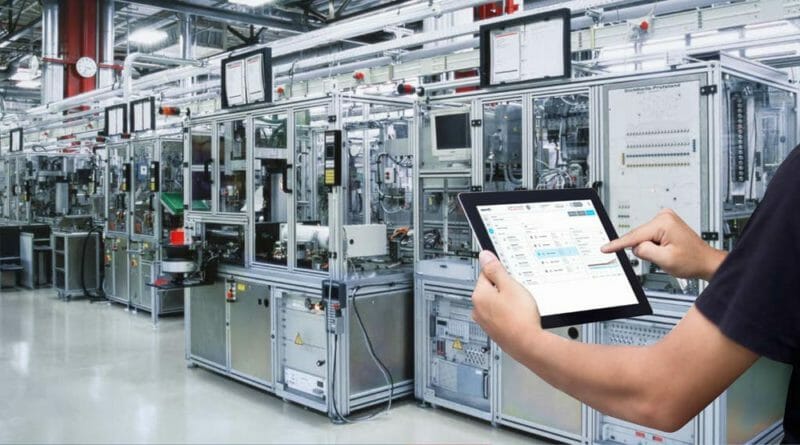Mechatronics Paves the Way to the Factory of the Future
Mechatronic systems are essential in today’s modern assembly production environment. The integration of linear motion components, electronic controls, software, electric motors, and sensors provide a versatile toolbox for machine builders.
Assembly operations that use joining and pressing tools for a wide range of production applications are, like many manufacturers, seeking to improve the versatility, ease of use, and performance of their production tools. They are seeking mechatronic systems that take advantage of the latest developments in both hardware and software to help improve precision and quality of the parts they produce.
At the same time, they also seek to add Industry 4.0 capabilities to their operations and production platforms. This includes taking advantage of enhanced tracking of data about each machine’s production, including simple yet efficient ways to share that information—in real time, if possible—with higher-level production analytical systems to improve their overall operations.
As assembly operations begin to embrace the benefits of Industry 4.0 technology, a new concept called “smart mechatronics” has evolved, offering more intelligence, sophistication, and functionality in pressing and joining, while also being easier to specify, order, and deploy.
Current and Emerging Pressing and Joining Challenges
Manufacturers that make wide use of pressing and joining applications in their production are seeking ways to leverage Industry 4.0 technology to boost their productivity and keep their pressing and joining tools in line with the rest of their manufacturing platforms.
Through smart, well-engineered integration of linear components and electronic motors, controls, and sensors, mechatronics makes it easier for OEMs that supply tools to the pressing and joining industry to quickly build efficient, high-performance manufacturing systems.
In some ways, mechatronic systems could even be considered a forerunner of Industry 4.0 technology: combining disparate mechanical and electronic components into solutions dedicated to specific product assembly and transport tasks, such as Cartesian robots and forming and crimping tools.
The smart mechatronics concept builds on that value, creating manufacturing systems with features such as advanced sensors and operator-friendly tools that do not require sophisticated motion control programming ability and are able to yield real-time data for system performance and manufacturing quality.
Machine builders and end-users want precise control and execution of motion sequences, but also automated tracking of production data and easy connectivity with machine-level and plantwide production management systems.
There is also a demand for greater versatility and easier, faster changeovers: Many pressing and joining production lines or mid-size shops seek tools that make it easy to produce a wide range of batch sizes, from the low end of only a few thousand parts up to hundreds of thousands, without requiring extensive effort to re-program tools for a new part.
From Integrating Components to “Plug and Produce”
At one time, mechatronics pressing and joining tools had to be integrated with components coming from multiple suppliers: drives and motors from one company, mechanical components like electromechanical cylinders from another, controllers or industrial PCs to run the machine from someone else, plus all the requisite cabling and power supply devices.
Leading mechatronics suppliers are replacing that time-consuming acquisition and integration step with complete solutions that are literally “plug and produce”: complete systems with all the electronics, mechanical components, sensors, cabling, communications interfaces, and drive and control components, including software that is pre-programmed and delivered as a single production tool.
To streamline how these plug-and-produce mechatronics solutions are specified, configured, and purchased, a new generation of online tools are being deployed. These tools are designed to make it easier for engineers that have just a basic understanding of linear motion and controls requirements to create a complete solution.
Following sizing and configurator prompts, all the components for a complete mechatronic solution—a Cartesian robot or a pressing or joining tool—can be specified in a single process. Users can enter parameters such as stroke, workpiece weight, and cycle time which then generates an output that can be verified in the CAD environment.
Smart Mechatronics Deliver Real-World Benefits
Manufacturers that use joining and pressing machines are taking advantage of the flexibility and ease of use the latest smart mechatronic systems offer. Recently, a leading sensor manufacturer was setting up a new production line, one designed to produce small batches with exact pressing and joining processes.
A key production step is pressing a small lid precisely onto the sensor housing. Programming this process can now be done by an operator— no specialized skills are required. Software blocks are selected and combined via a drag-and-drop programming style, the process parameters are entered, and the workflow is complete.

